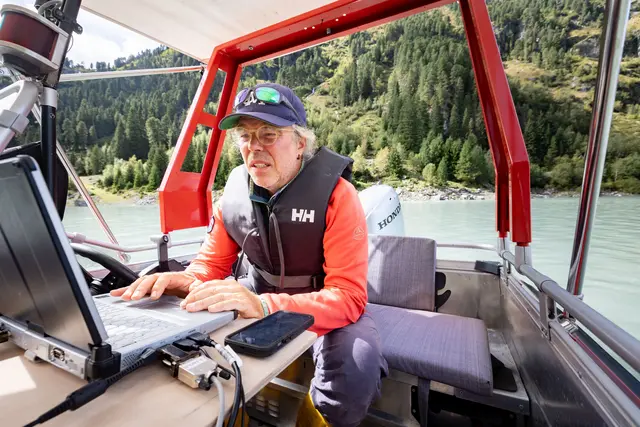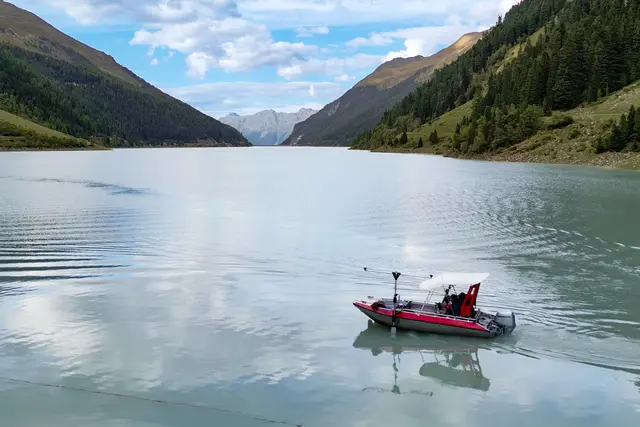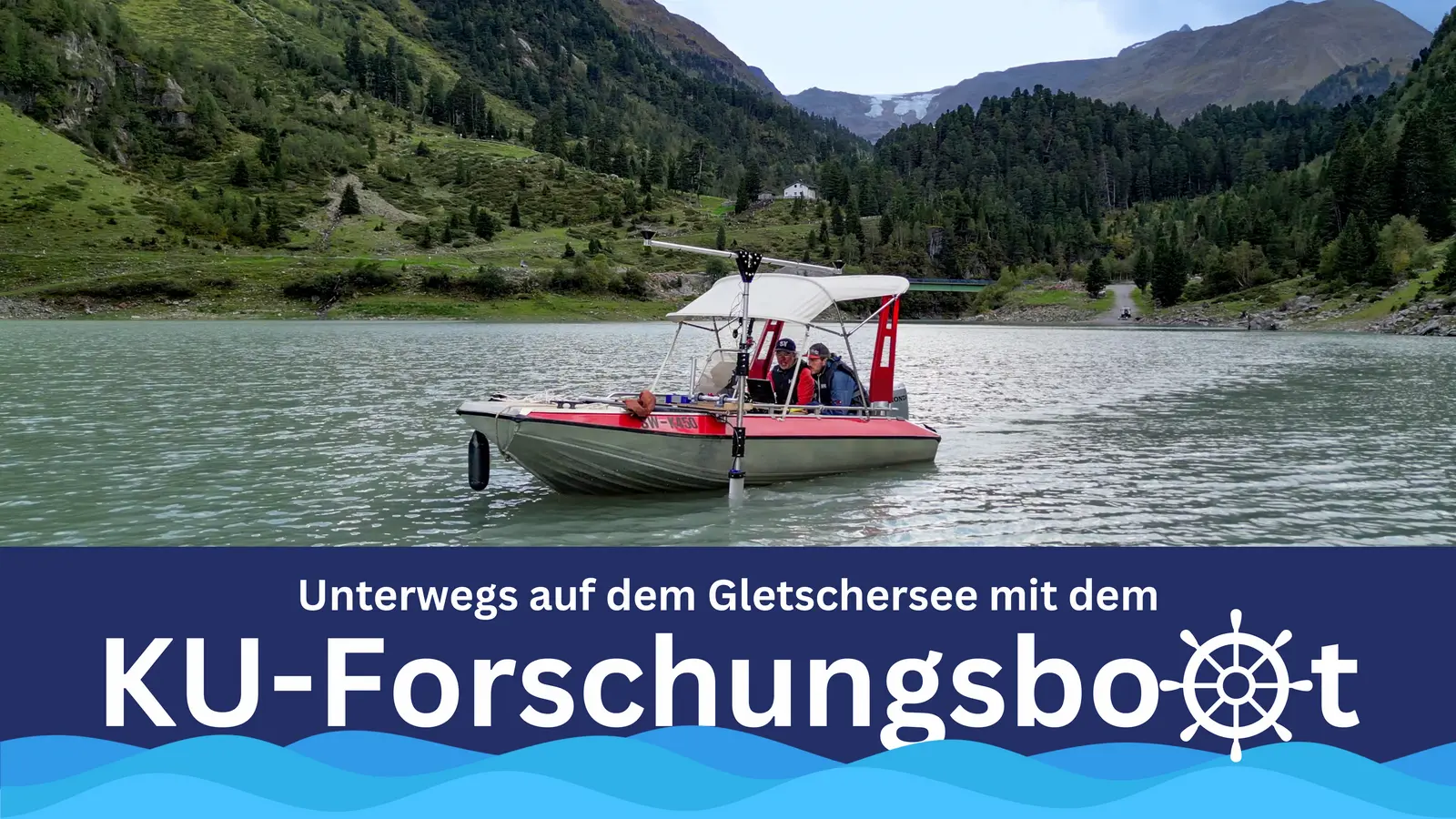Dr. Florian Haas, adjunct professor at the Chair of Physical Geography, has taken a seat behind the steering wheel, with research assistant Dr. Manuel Stark at his side. In front of them on a mounted table: a laptop, screens and quite a few technical devices. From there, cables lead to a structure that is attached to the outer wall of the boat and protrudes into the water: the so-called multibeam echo sounder. It emits beam-shaped sound waves into the water and measures the reflections at the lakebed. This allows the researchers to calculate the depth of the water to accurate to the centimeter – not just at one specific point, but over a path several meters wide. The measuring instrument is equipped with a satellite navigation system so that the exact position data is stored together with the measured values. When tracing a body of water systematically in paths, you obtain a detailed underwater terrain model. Florian Haas pushes the throttle of the engine forward, the aluminum boat with the two researchers accelerates and heads for the middle of the Kaunertal reservoir.
The terrain around the Gepatschferner, the second largest glacier in Austria, has been a popular research destination for geographers for several years. Within the framework of the international project "Sensitivity of High Alpine Geosystems to Climate Change from 1850 onwards" (SEHAG), a research group of the German Research Foundation (DFG) coordinated by the KU is investigating the effects of climate change in the Alpine region on glaciers and rivers, vegetation and geomorphology. In addition to the scientists from Eichstätt, researchers from Bern, Bolzano, Bremen, Munich, Innsbruck and Vienna are also involved. The project reconstructs the changes caused by the melting of the glacier retrospectively for the time since 1850, measures processes currently taking place, and thus attempts to make a forecast as accurate as possible for the time until 2050.
![[Translate to Englisch:] Forschungsboot](/fileadmin/_processed_/3/3/csm_Forschungsboot-1_7dd8fb7f52.webp)


